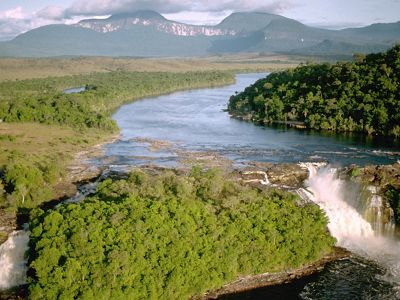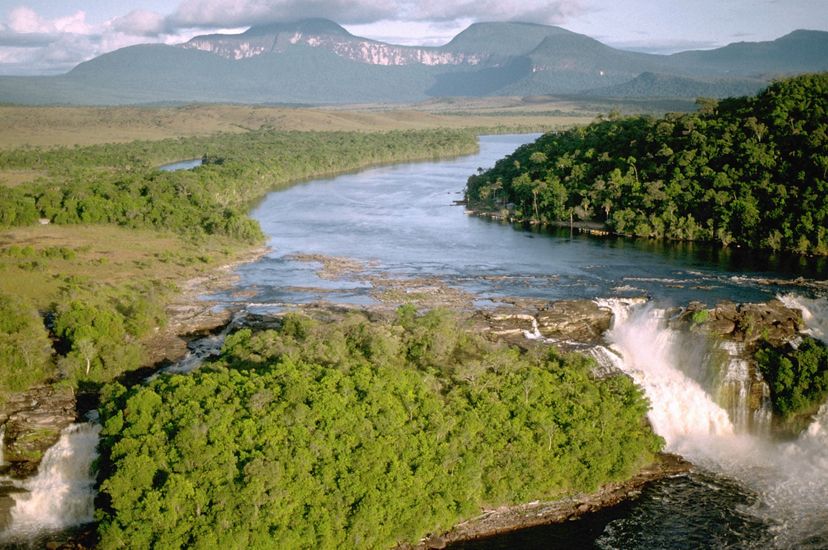Green Infrastructure for a Thirsty Region: Water Security in Latin America and the Caribbean
by Alexandre Meira Da Rosa, Vice President for Countries, Inter-American Development Bank
There are some 630 million people in Latin America and the Caribbean—less than one-tenth of the world’s population, and yet our region has more than one-third of the planet’s fresh water reserves. The region has a per capita availability of 23,000 cubic meters of water a year, 300 percent more than the world average. This is probably the reason why only in extreme situations such as prolonged droughts caused by El Niño we recognize the true value of this key resource.
Water availability is crucial for Latin America and the Caribbean. About 70 percent of the electricity we use is generated by hydroelectric power plants—more than in any other region in the world. Many of our main export products depend on a regular and sufficient water supply. And needless to say, life in our cities, which are home to eight out of every 10 inhabitants in the region, would not be possible without a reliable water supply.
Despite this heavy dependence, historically our countries have not paid enough attention to water security—unless, of course, an emergency suddenly forces us to ration its use. This problem is particularly apparent in the area of watershed management. There, a true “tragedy of the commons” usually takes place: by action or omission of many actors, shared resources that we all need are degraded or destroyed—a trend expected to worsen with climate change. This tends to happen, for example, in the upper parts of basins, where environmental damages caused by deforestation typically go unrepaired.
Fortunately, there is a collective action mechanism so that this “nobody’s problem” turns into everybody’s responsibility. In 2011, the Inter-American Development Bank, The Nature Conservancy, the FEMSA Foundation and the Global Environment Facility formed a public-private partnership to create and promote water funds, a financial and governance instrument that seeks to preserve water sources through nature-based solutions—also known as green infrastructure.
These funds leverage public and private resources, investing the financial yields in conservation projects such as reforestation of eroded hillsides, creation of protected areas in areas of high ecosystemic value, management of payments for environmental services to local producers, and training for and improvement of agriculture and livestock practices, among others.
Quote
Historically our countries have not paid enough attention to water security—unless, of course, an emergency suddenly forces us to ration its use.
In these seven years, we’ve helped create and consolidate 23 water funds in Brazil, Colombia, Costa Rica, the Dominican Republic, Ecuador, Guatemala, Mexico and Peru, and new initiatives are being developed in countries like Argentina and Chile. These mechanisms have led more than 200 public and private organizations to support projects worth more than US$150 million in basins supplying water to more than 80 million people.
The resources are being invested in a series of green infrastructure projects that promote watershed conservation and complement investments in gray infrastructure. In some cases, highly eroded hillsides are being reforested; in others, protected areas are being created, sustainable agricultural practices disseminated, and payments for environmental services generated.
The cases of Paraiba do Sul and Guandu in Brazil are encouraging examples. These watersheds cover a 6.6-million-hectare area and ensure drinking water supply to 14 million people in the Rio de Janeiro region. In 2014 and 2015, the resource availability reached minimum levels due to extreme climate events (drought), endangering the water supply systems that depend on these hydrological watersheds.
To cope with these threats, the Rio de Janeiro Water Fund has focused its efforts on supporting green infrastructure projects, working closely with the government, and gaining approval of a total US$15.7 million for investments by the Guandu Committee and the Committee for the Integration of the Paraiba do Sul Watershed, with interventions for the protection, preservation, conservation and recovery of natural springs.
The city of São Paulo—which with its 20 million people is one of the largest in Latin America—is yet another example. In 2014, the city faced an unprecedented water crisis. The São Paulo Water Fund, set up in 2013, is helping out with investments in green infrastructure that take advantage of the power of nature to capture, infiltrate and regulate the water cycle.
The Fund activities include the creation of a digital platform to map out and register nearly 4,300 property titles in rural areas covering more than 80,000 hectares in the Cantareira System hydrological basin, which sources the water for 10 million people living in the São Paulo metropolitan area. These conservation actions are expected to generate environmental benefits such as river preservation, biodiversity conservation, and carbon absorption, helping combat climate change. To date, a total 8,000 hectares have been preserved, restored and subject to best practices, directly benefiting 283 families in the upstream part of the basin.
The Lima Water Fund (Aquafondo) offers another example of a region facing different circumstances. The 9-million-plus capital of Peru is the world’s second largest city built on a desert, after Cairo. The region gets only 9mm of rainwater a year, and depends on water from the surrounding hills provided by the rivers Chillón, Lurín and Rímac.
Through joint action from several partners, including Aquafondo, the water services regulatory framework was reformed to let water utilities—in particular SEDAPAL, the capital’s water and sanitation services provider—set aside 1 percent of their proceeds to green infrastructure, and an average 3.5 percent to climate change mitigation and adaptation. In the next five years, this will translate into investments to the tune of US$25 million and US$92 million, respectively.
The progress achieved by the initial water funds encourages us to continue supporting their creation and strengthening. By the year 2020, we expect to create and strengthen a total of 40 funds, covering four million hectares of key ecosystems and leveraging US$500 million to invest in green infrastructure.
This way, we shall be taking a giant step on the road not just to water security in our region, but also to a better quality of life for its people.
Originally posted on Plantera Futuro, El Pais (Spanish)
May 11, 2018
View Original



